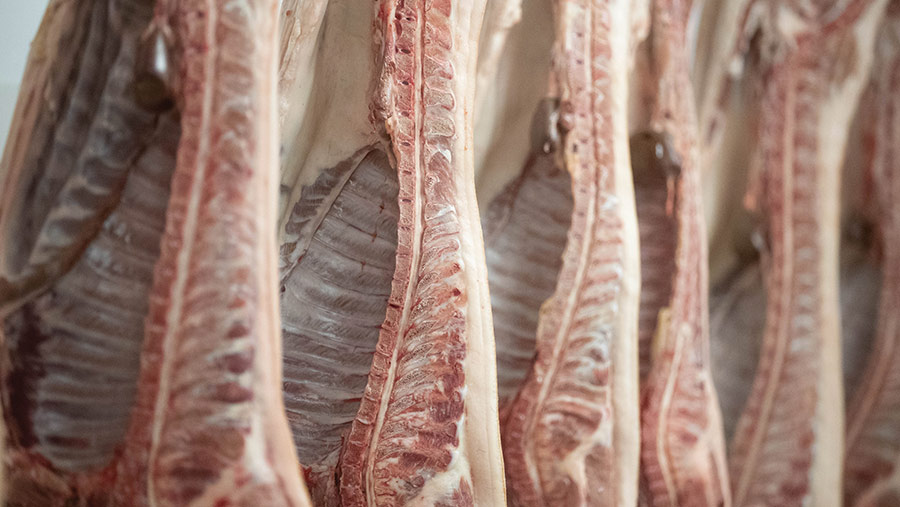Why lung scoring could improve pig health and welfare
 © Tim Scrivener
© Tim Scrivener Carrying out lung scoring at slaughter can help pig producers better monitor the respiratory health of their herd, improve welfare, and potentially save on vet and medicine bills in the long term.
This is according to Ceva’s Roman Krejci, who says many producers could be overlooking the welfare and economic impact of respiratory diseases that are often either not recognised or dismissed as low-level coughs within their units.
See also: Why environmental monitoring can improve pig health and welfare
Why lung-score?
Lung lesions often occur as a result of respiratory challenge in pigs, with enzootic pneumonia (EP) being the most commonly seen in the UK.
The severity of this was highlighted in a 2020-21 EU lung analysis, which scored more than 280,000 lungs across 20 countries over a 12-month period.
The analysis showed a peak of 57% of lungs scored with EP-like lesions.
Other health challenges, such as pleurisy, can also be a causal factor in the presence of lung lesions.
Lesions can have a major impact on pig performance, such as reduced daily liveweight gain, says Dr Krejci.
A European Food Safety Agency report also identified lung lesions as one of the top four welfare indicators in pigs, showing that the issue is multi-faceted.
He adds there is evidence to show that the presence of EP-like lesions and pleurisy can have a negative impact on carcass and meat quality.
This is seen in changes to pH, water holding capacity, colour and flavour, as well as loss of quality when cooked.
How is scoring done?
While scoring is carried out in the abattoir, alongside a vet, Ceva’s Healthy Lung Programme – which is based on the Madec score – looks at lung lesions on a per lobe basis.
These are scored from 0-4, with a score of 4 representing the worst affected (76-100% of the area).
These scores are added together and combined with lobe weight to give an average percentage of the total lung surface area affected.
As EP in particular spreads very easily between animals, via multiple routes, these data can be used as an indicator of the extent of infection likely on farm, and how big a threat this is.
Prevention
Vaccination against Mycoplasma hyopneumoniae – the causal pathogen in EP – is a key way to reduce risk.
While it is not possible to completely prevent EP, vaccination can reduce the presence of lung lesions significantly, as demonstrated in multiple field trials, says Dr Krejci.
It is also vital to take environmental management steps, such as thorough cleaning protocols, to reduce the build-up of the bacteria, as well as ensuring isolation for new pigs coming into the unit if not operating an all-in, all-out policy.
Next steps
Dr Krejci says routine monitoring of lung lesions at slaughter should be implemented as a priority. He recommends producers discuss with their vet how to do this.
Enzootic pneumonia – the facts
- Enzootic pneumonia (EP) is caused by Mycoplasma hyopneumoniae – a pathogen unique to pigs and thought to be present in more than 80% of pig herds in the UK at some level
- EP has been proven to cause up to a 10% reduction in daily liveweight gain and feed conversion efficiency
- It can also put pigs at greater risk of other respiratory challenges
- Pigs with EP are likely to have a 1.26kg reduction in post-trimming carcass weight, compared with non-EP suffering pigs
Source: AHDB
Roman Krejci was a speaker at the recent Pigs Tomorrow conference

